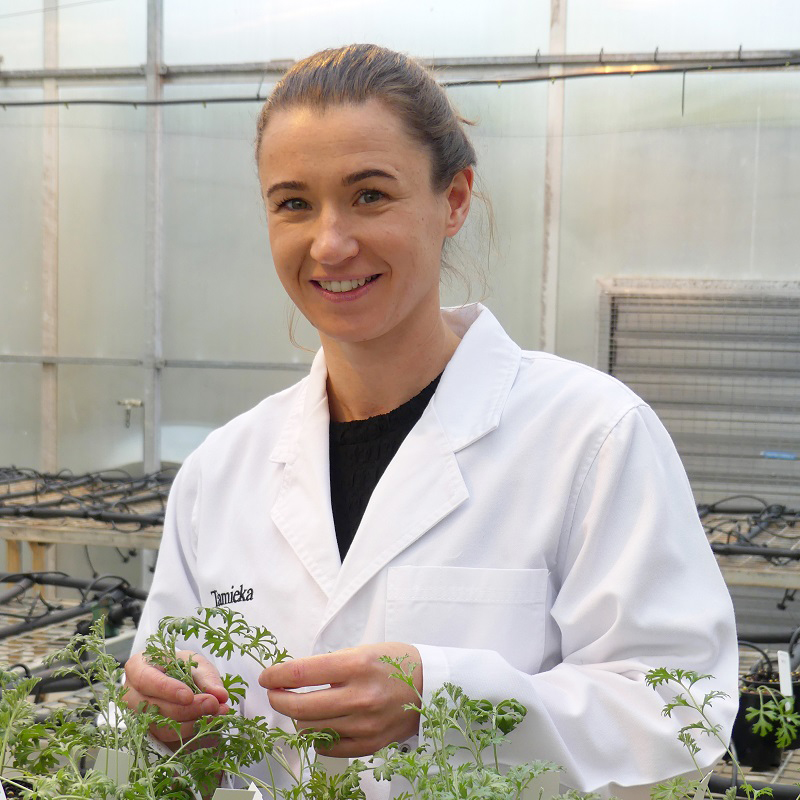The Australian pyrethrum industry is backing a new research project that aims to shorten the growing time of pyrethrum to fit within an annual cropping cycle. This research addresses a key industry challenge and has the potential to be revolutionary.
Research Fellow at the Tasmanian Institute of Agriculture, Dr Tamieka Pearce, has been awarded an Australian Research Council (ARC) Early Career Industry Fellowship worth almost $500,000 to lead this research.
Dr Pearce will work shoulder-to-shoulder with global pyrethrum supplier Botanical Resources Australia (BRA), based at Ulverstone, who are also contributing funds and in-kind support to the $1.5 million project.
“This research project will generate new knowledge on the genetic and physiological drivers that enable early pyrethrum flowering, with the goal of reducing the 18-month crop cycle to 10-months. Outcomes will include new protocols and germplasm for breeding and managing short cycle crops for optimum yield,” Dr Pearce said.
“Pyrethrum is grown commercially for the extraction of insecticidal pyrethrins, and Australia is the global leader in pyrethrin production. However, the long 18-month crop cycle poses a challenge to the industry’s profitability as it limits opportunities for growers and increases exposure to weeds and fungal diseases.
“We believe there is an opportunity to achieve an economically viable crop in just 10 months. This would have a transformational effect by reducing crop inputs, reducing the lag period without economic return for growers, and allowing pyrethrum to fit within a standard annual horticultural crop rotation.
“It’s hoped this research will lead to multiple benefits including an economically attractive crop options for growers and a more sustainable industry.”
This project builds on a foundation of research between Botanical Resources Tasmania and the University of Tasmania which began in the 1980s with development of the first commercial pyrethrum varieties.
“This is an important project for the pyrethrum industry. It will allow us to develop a production model that works better for farmer and increases the predictability and reliability of the crop. Our experience shows there is a wide range of natural variation in our plants which can be harnessed with better understanding of the crop physiology and genetics,” Dr Kristin Groom, R&D Manager for Agriculture at Botanical Resources Australia, said.
The Early Career Industry Fellowships scheme aims to build innovation in the research and industry sectors and facilitate the adoption, translation and commercialisation of Australian research over time.
Dr Pearce was also awarded $250,000 through the Tasmanian Government’s Agricultural Development Fund for a second collaborative research project with Botanical Resources Australia. This project aims to develop a pathogen test to monitor when disease control is required in pyrethrum crops.
TIA is a joint venture between the University of Tasmania and the Tasmanian Government.
Want to receive news & events updates from TIA? Subscribe to our newsletter.



